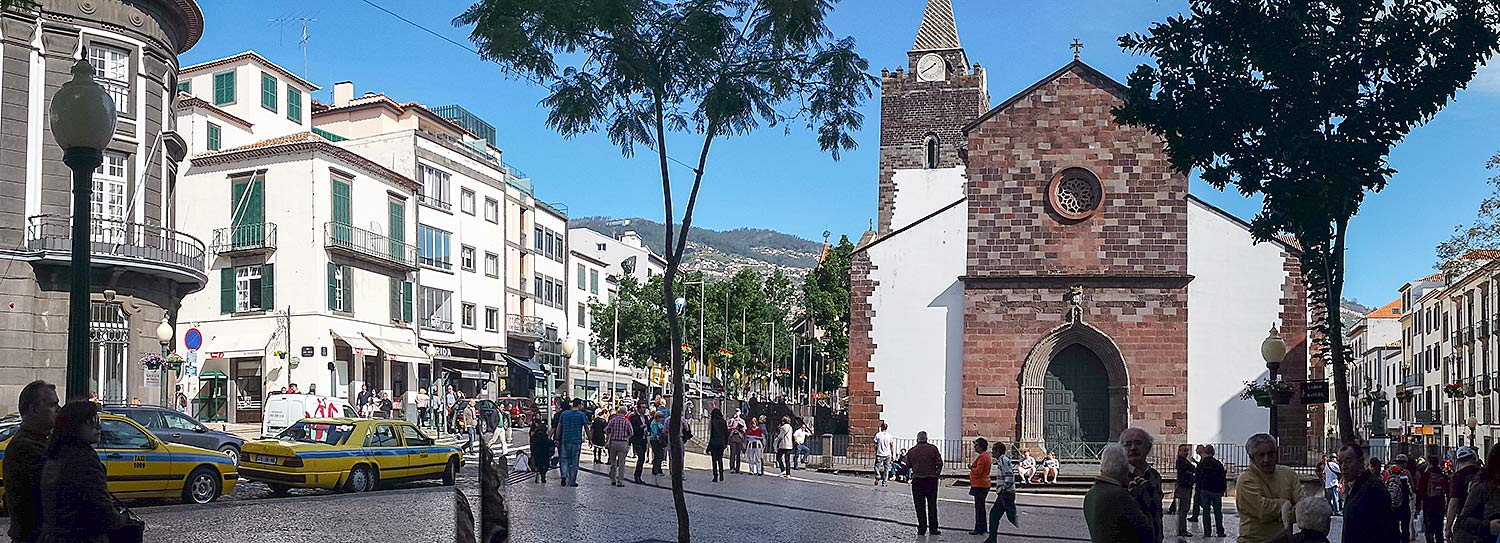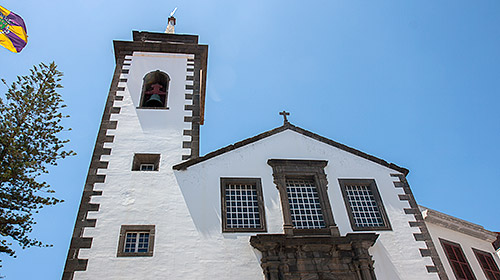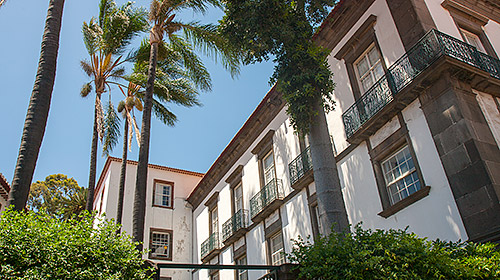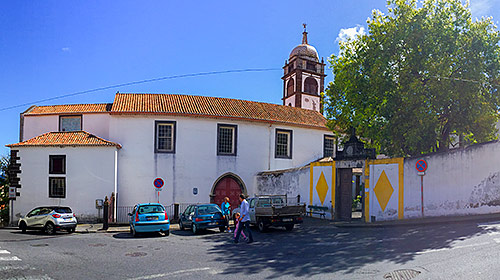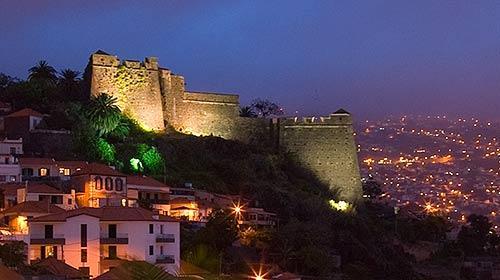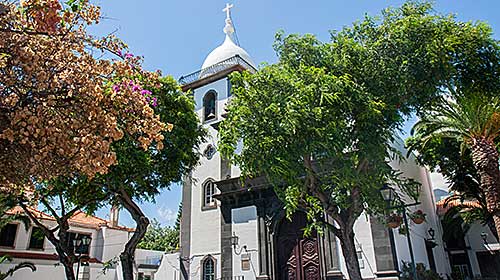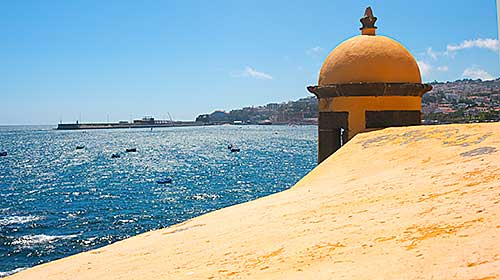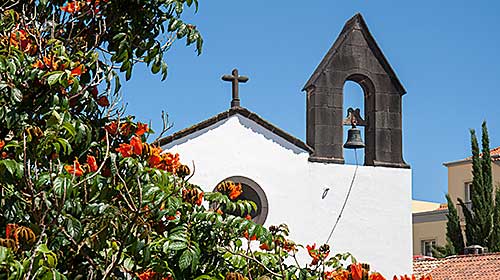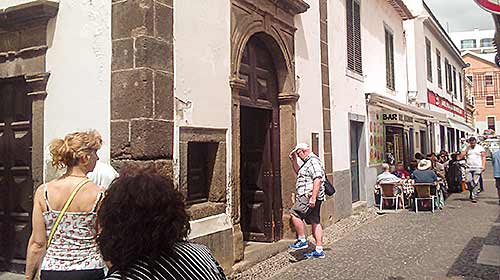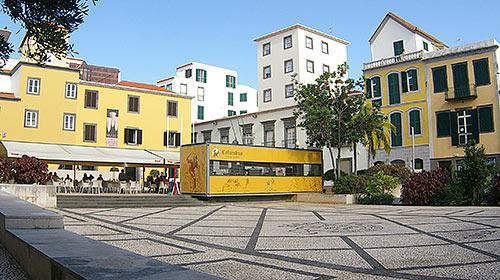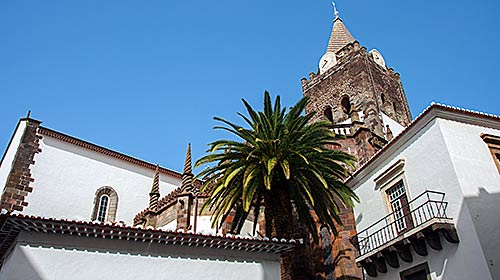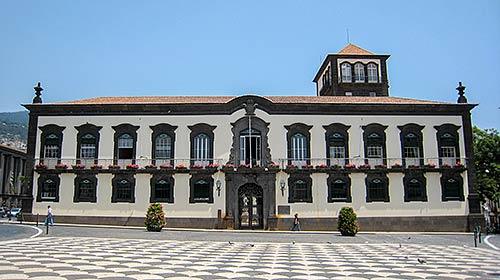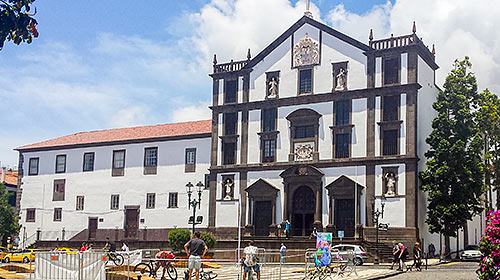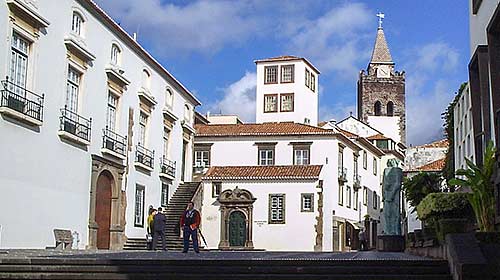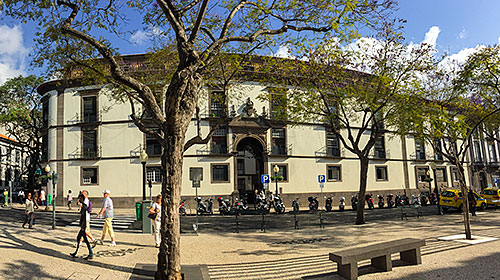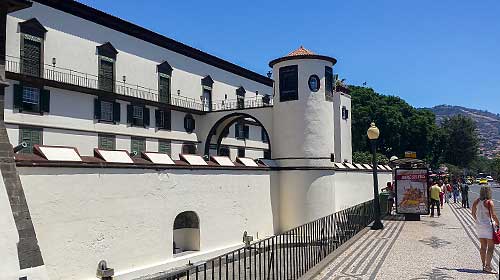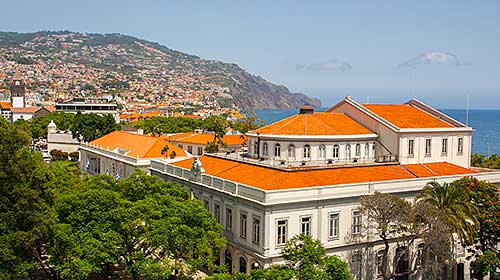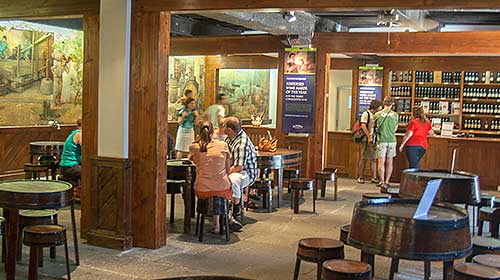The locals living near the Calhau beach built the first church in Funchal. It was enlarged twice, first in 1438 and again in 1450, but still considered too small for the needs of the population. Finally, in November 1485, a new church started being built on the square Campo do Duque but the construction suffered several delays. Then, in the year 1500, the King D. ManueI l insisted that the construction of the so-called ‘big church’ be finished, and in 1517 the new temple was finally consecrated.
The architecture of this Cathedral is a mixture of a rather heavy south European Gothic and Moorish, Manueline and locally based influences.
Ten Gothic arches connect the naves and the dim natural light is coming from eight Manueline breaches, a rose window on the facade and a few spear-shaped windows above the high altar.
The original content of the church was very exceptional and can now be found a bit everywhere in Funchal’s museums. A few of the treasure’s pieces can be seen in the Sacred Art Museum. When entering the church you will find some of King Dom Manuel’s donations, such as the font, still located in its original place, the pulpit and the small high altar. Six chapels with Gothic arches occupy the lateral naves.
A triumphal arch gives passage to the sanctuary and the entire back wall of the chapel is covered with an impressive panel consisting of several magnificent gold-framed paintings. On each sidewall of the sanctuary you will find a Manueline lecture hall with two rows of chairs, of which the higher row was reserved to the capitularies and the lower one to the chaplains. The first row has beautifully wood carved seat rests that gather images of apostles and prophets. Both on the seats and on the armrests, you will find interesting drawings of medieval influence, some even a bit bold, probably the result of too much imagination of the Manueline artists. In the Capela do Santissimo, decorated in the style of the 18th and 19th century, you will find a large painting from the 17th century depicting the ‘Last Supper’.
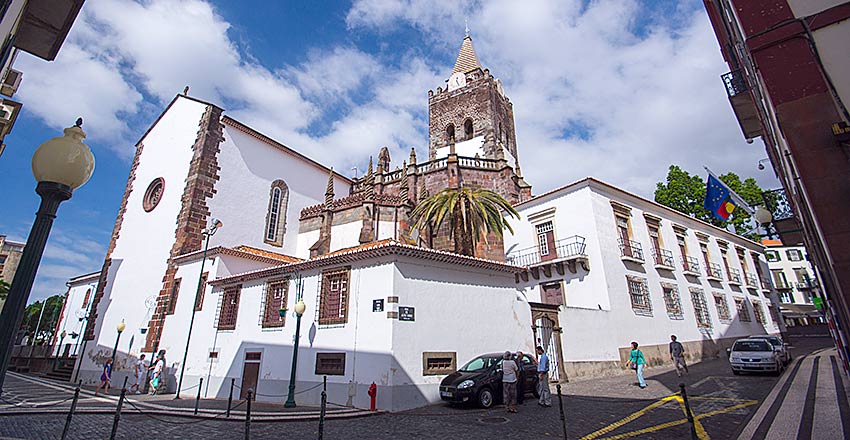
Today there are two mechanic clocks at the top of the tower that set the city’s daily rhythm. But before these two, there had already been other clocks. The first was put up in 1776 and it was taken down in 1921, today being kept in the Municipal Library. The following clock, which was a donation from an English doctor, was put up in 1922. But it was only in 1923 that also the minutes could be seen, as until then this clock had only one hand to mark the hours. In 1989 this clock was finally replaced with the electronically controlled ones of today.
OPENING HOURS AND SERVICES
Sunday and Holy Days: 7:15 to 12:00 and 16:15 to 19:00 p.m.
Saturday: 9:00 to 12:00 and 16:00 to 19:00
Monday through Friday: 7:15 to 18:30
Public holidays: from 9:00 to 12:00
MASS TIMES
Sunday and Holy Days: 8:00, 9:00, 11:00, 17:00, 16:15
Saturday: 8:30, 11:00, 18:00
Monday through Friday: 8:00, 8:30, 11:00, 17:30
Public Holidays: 11:00


 English
English  Português
Português  Deutsch
Deutsch  Español
Español 